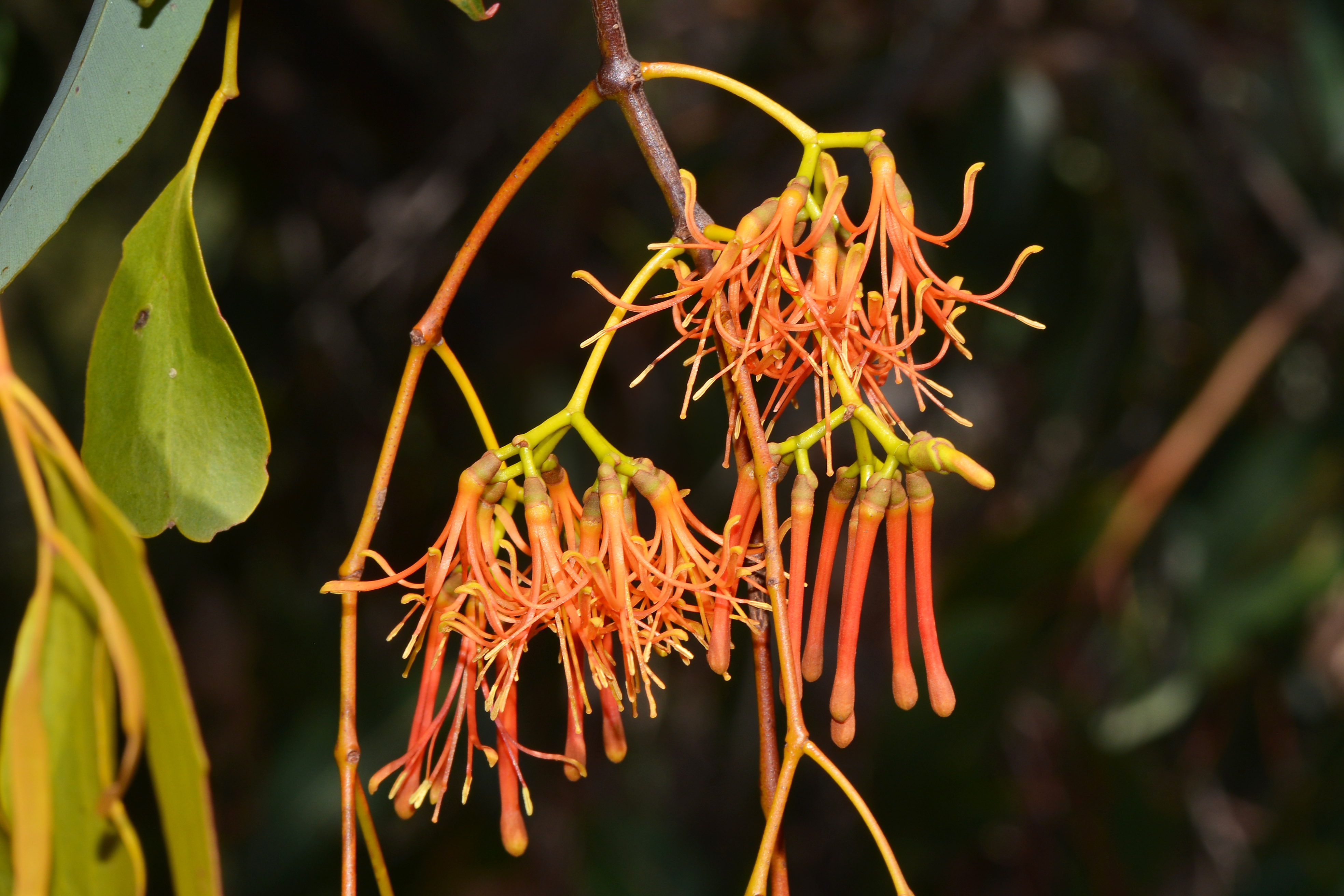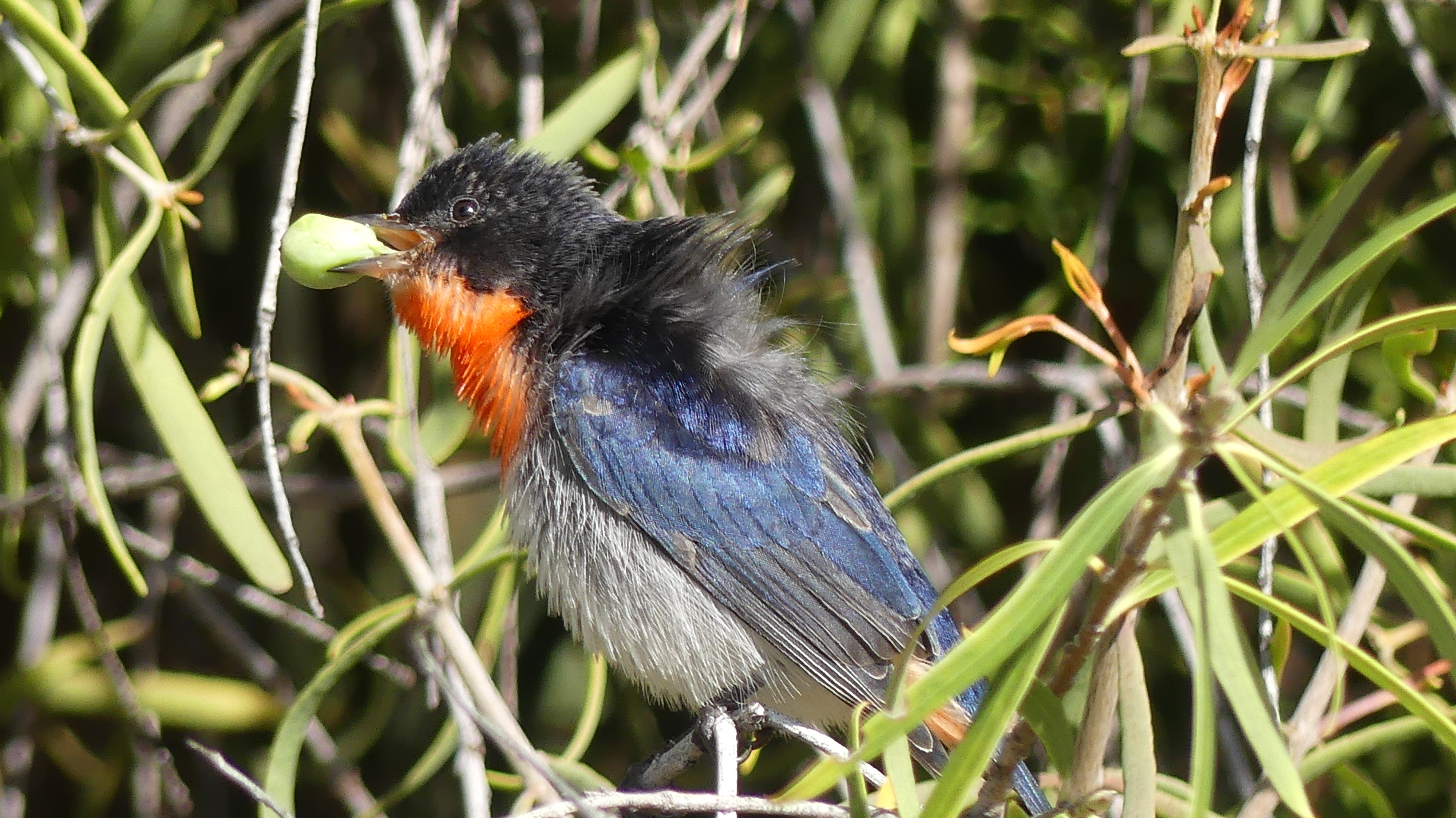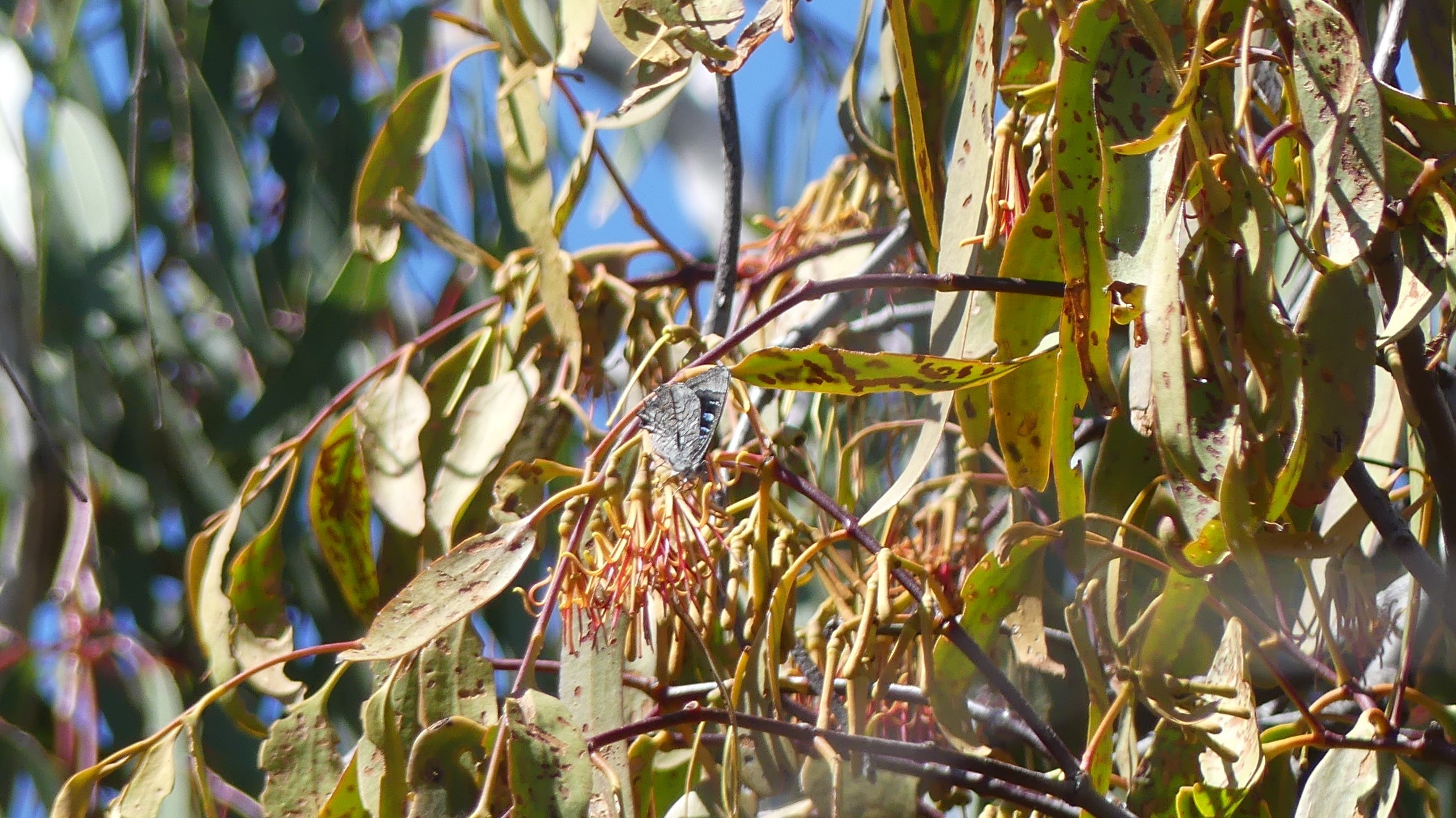You’re probably familiar with the Christmas tradition of kissing under the mistletoe. Did you know about its slanderous reputation as a tree killer? Read on to find out the truth.

While there are 1000+ different species of mistletoe across the globe, the most well-known is the European mistletoe (Viscum album).
Here in Australia there are almost 100 native species of mistletoe – and in greater Adelaide, there’s just 5 including box mistletoe (Amyema miquelii), wire-leaf mistletoe (Amyema preissii), tea-tree mistletoe (Amyema melaleucae), drooping mistletoe (Amyema pendula ssp. pendula) and harlequin mistletoe (Lysiana exocarpii).
You are most likely to find mistletoe living in the crown (where the branches grow out of the trunk) of its host plant.
Mistletoes are ‘semi-parasitic’ plants, which means that they create some food themselves and rely on a host plant (like a tree) for the rest.

Is mistletoe bad for a tree?
Native mistletoe is misunderstood in Australia because they are a semi-parasitic plant.
As a semi-parasitic plant, mistletoes rely on their host tree for survival. But if the tree dies, they die too. So they really don’t want to hurt their host – who gives them life.
Mistletoes don’t usually damage host trees or any other plant that they attach themselves to, and this living on a tree life is all a part of the natural environment.
Plus trees can shake them off if they really wanted. Trees are known to drop a branch when wanting to remove mistletoe on them.

What are the benefits of mistletoe?
Mistletoe is great for:
- Bird food, particularly for the aptly named mistletoe bird.
- Host plant for the rare southern purple azure butterfly and 3 other local butterfly species. Note: Harlequin mistletoe is not a butterfly host plant.
- Being a cool spot for bird nests.
- Creating tree hollows. When a tree drops a limb to shake off mistletoe this can create a new hollow for local birds and animals.
So if you spot some mistletoe in your garden, think twice before removing it.

How does mistletoe grow?
Mistletoes don’t have the same root system as other plants.
They have a ‘haustorium’ which means a stem or root that can attach and grow (by taking some nutrients and water) on a host plant.
Mistletoe can change the way they look to match their host. For example, box mistletoe has leaves shaped like Eucalyptus leaves.
This is because they share hormones with their host trees, and it may be a mistletoe camouflage survival tactic to avoid being a possum snack.
Once established, mistletoe takes a little while to flower and produce fruit.

How to “seed” mistletoe
You’ve read the benefits. Now here’s 7 steps to seed/propagate mistletoe in your yard:
- Find a healthy and not too young tree to be the host.
- Locate some fruiting mistletoe.
- Pick some ripe fruit from the mistletoe
- Pop the seed out of the fruit. It’ll be sticky.
- Find a branch on your host tree about the width of a pencil.
- Wipe the sticky seed onto the branch’s underside.
- Wait and see if it takes and grows.
Top tip: To maximise your success, seed more than one plant per branch. If they all start growing, remove the extras, leaving just one.

Spread the mistletoe love
Mistletoe is an important part of a healthy environment.
You can help by:
- Spreading the word about the important role mistletoe plays in Adelaide’s environment.
- Leaving native mistletoe if you spot it on a tree at home
- Finding opportunities to propagate native mistletoe – just give it a go!
Looking for another way to help nature? Start gardening!
Head to our gardening hub for tips and tricks to help, including a downloadable copy of our Adelaide Planting Guide.